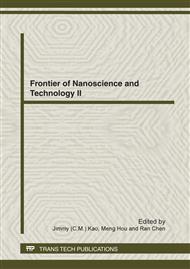p.95
p.99
p.103
p.107
p.113
p.117
p.121
p.126
p.130
Characteristics of Compression Wood Tracheid of Loblolly Pine Induced by Artificial Inclination
Abstract:
Three-year-old seedlings of loblolly pine (Pinus taede L.) were selected as materials in this article. The seedlings were planted in spring and divided into five groups, then were artificially inclined at the angles of 0°, 15°, 30°, 45° and 60° from the vertical. The characteristics of compression wood tracheid were observed and recorded, and their variation patterns were analyzed. The following conclusions were drawn: 1) with the increase of the inclined angle, the wall thickness of tracheid increased and the outline of the tracheid became round, the intertracheidular spaces were obvious and increased gradually in all sections derived from the inclined seedlings. The typical characteristics of compression wood were obvious when the inclined angle was bigger than 30°; 2) with the increase of the inclined angle, the tracheid length decreased firstly and then fluctuated, the minimum value reached at 30°; the tracheid width decreased firstly and then increased, the minimum value reached at 45°; the double wall thickness increased firstly and then decreased, the maximum value reached at 45°. 3) In the seedlings studied, the critical angle of inclination was about 30° or 45° from the vertical.
Info:
Periodical:
Pages:
113-116
Citation:
Online since:
June 2012
Authors:
Keywords:
Price:
Сopyright:
© 2012 Trans Tech Publications Ltd. All Rights Reserved
Share:
Citation:


